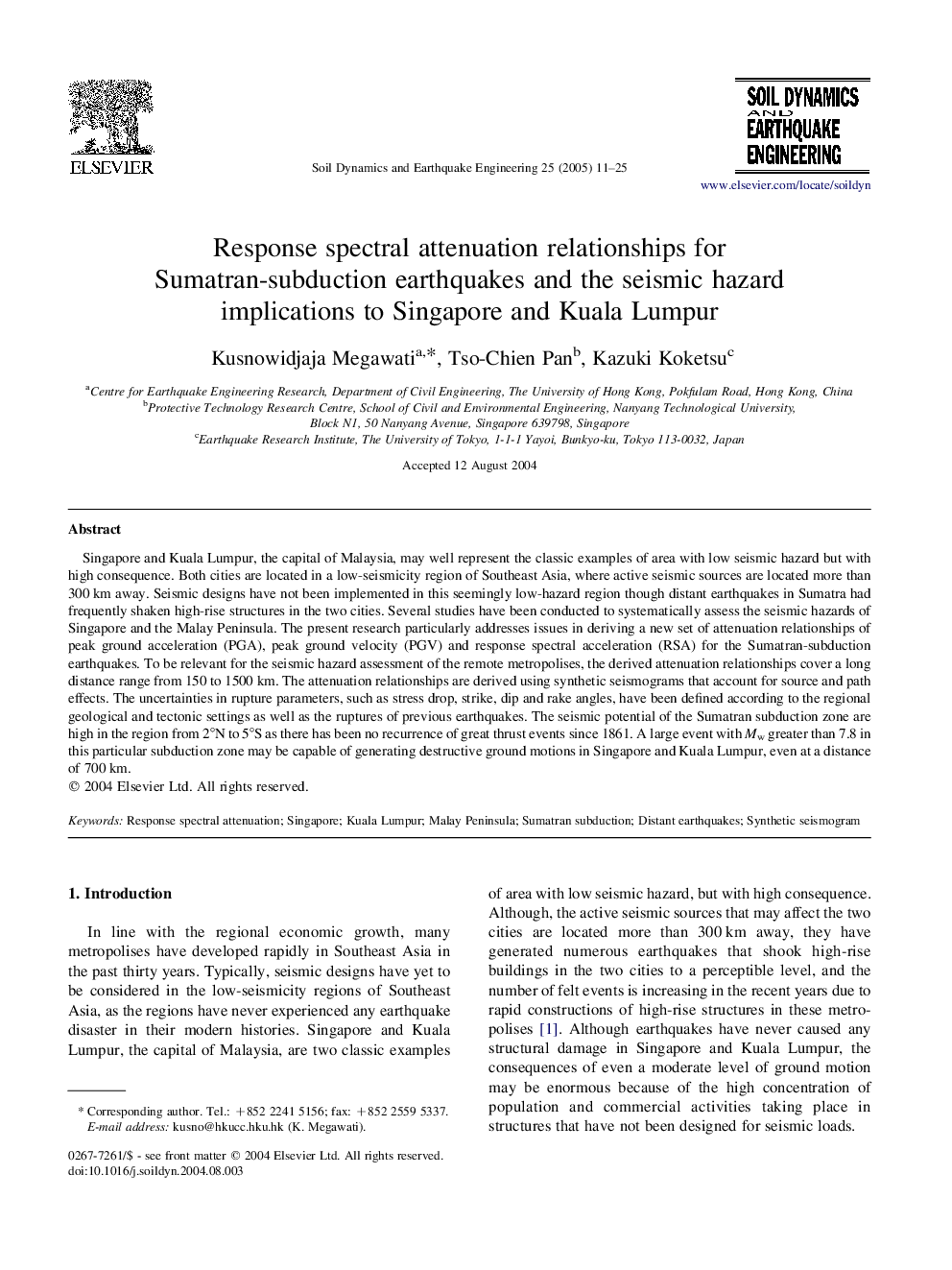| Article ID | Journal | Published Year | Pages | File Type |
|---|---|---|---|---|
| 10294986 | Soil Dynamics and Earthquake Engineering | 2005 | 15 Pages |
Abstract
Singapore and Kuala Lumpur, the capital of Malaysia, may well represent the classic examples of area with low seismic hazard but with high consequence. Both cities are located in a low-seismicity region of Southeast Asia, where active seismic sources are located more than 300 km away. Seismic designs have not been implemented in this seemingly low-hazard region though distant earthquakes in Sumatra had frequently shaken high-rise structures in the two cities. Several studies have been conducted to systematically assess the seismic hazards of Singapore and the Malay Peninsula. The present research particularly addresses issues in deriving a new set of attenuation relationships of peak ground acceleration (PGA), peak ground velocity (PGV) and response spectral acceleration (RSA) for the Sumatran-subduction earthquakes. To be relevant for the seismic hazard assessment of the remote metropolises, the derived attenuation relationships cover a long distance range from 150 to 1500 km. The attenuation relationships are derived using synthetic seismograms that account for source and path effects. The uncertainties in rupture parameters, such as stress drop, strike, dip and rake angles, have been defined according to the regional geological and tectonic settings as well as the ruptures of previous earthquakes. The seismic potential of the Sumatran subduction zone are high in the region from 2°N to 5°S as there has been no recurrence of great thrust events since 1861. A large event with Mw greater than 7.8 in this particular subduction zone may be capable of generating destructive ground motions in Singapore and Kuala Lumpur, even at a distance of 700 km.
Related Topics
Physical Sciences and Engineering
Earth and Planetary Sciences
Geotechnical Engineering and Engineering Geology
Authors
Kusnowidjaja Megawati, Tso-Chien Pan, Kazuki Koketsu,
